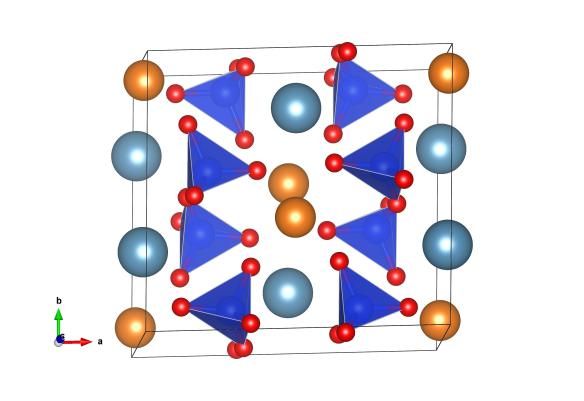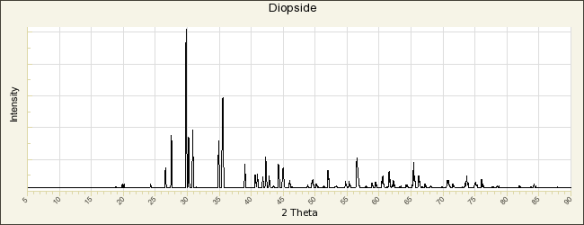A surprisingly important structure – Diopside
What does it look like?

The crystal structure of diopside, as determined by Warren and Bragg. The light blue atoms are calcium, the orange atoms are magnesium and the blue and red tetrahedra are the silica (SiO4) units. Image generated by the VESTA (Visualisation for Electronic and STructural Analysis) software http://jp-minerals.org/vesta/en/
What is it?
This is the crystal structure of diopside, which is a pretty common pyroxene mineral found in many igneous rocks. It's relatively rare to get it forming as pure Diopside (i.e. just made of CaMgSi2O6) as it forms in solid solution with other minerals like augite and hedenbergite.
What really marks it out is that diopside was the first crystal structure solved by looking at the variation in the intensity of the peaks from a diffraction pattern.
The first structures that were solved, those like rock salt and sphalerite, were mostly cubic and the positions of the atoms within them worked out solely from the positions of the diffraction peaks observed. It was soon realised that this method had only so much use, and that to understand more complicated structures the intensity variation of the peaks (like that shown in the diffraction pattern below) would have to be understood.

A powder pattern of diopside, taken from http://rruff.info/Diopside/R120003
Where did the structure come from?
W. L. Bragg worked with B. E. Warren to understand how crystal structures could be solved by examining the intensity variations of the diffraction peaks. The diopside structure, the first they reported using this technique, is described in Zeitschrift für Kristallographie in 1928. The structure is number #1011057 in the Crystallography Open Database. The methods that they come up with to do this, became the basis for solving all crystal structures to this day.






